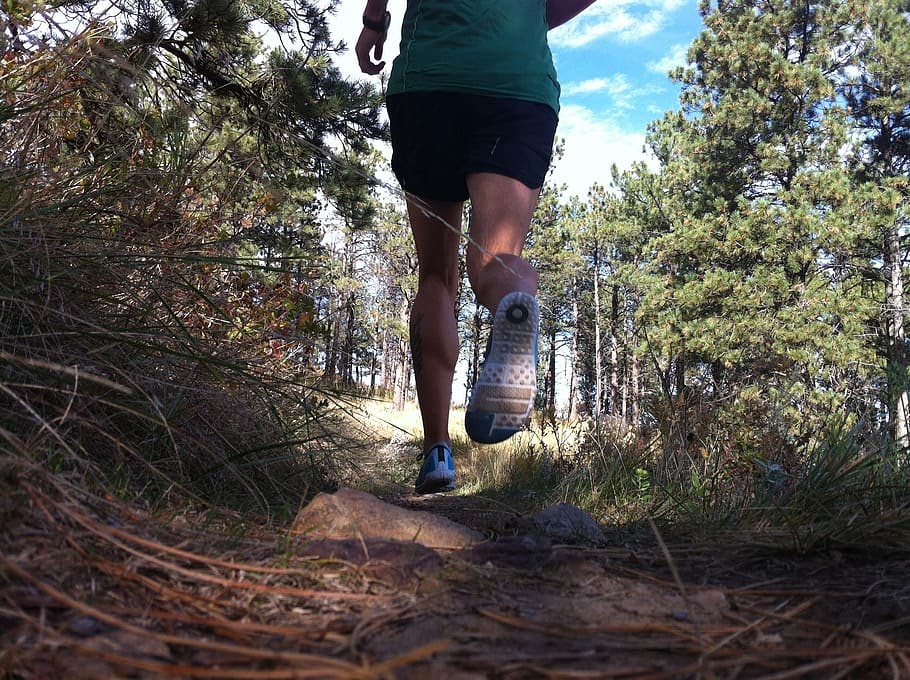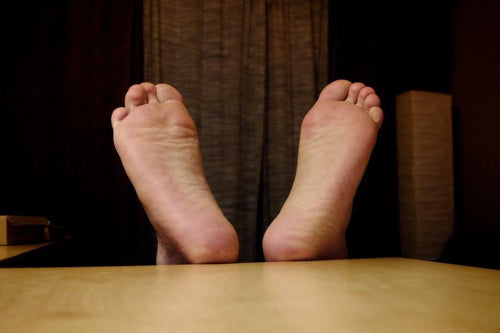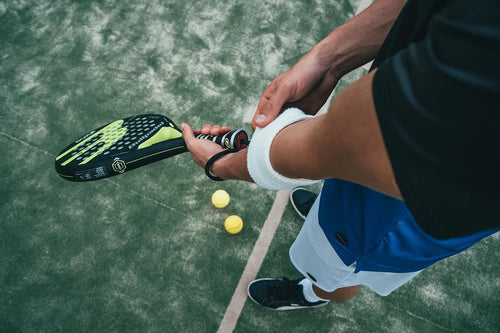Should trail running shoes be waterproof? It is one of the most frequently asked questions.
However, several schools of thought propose or oppose the use of waterproof running shoes for trail running.
Most of the runners prefer a more breathable option over waterproof design when it comes to trail running. However, the factor - water penetrates inside making them cumbersome and uncomfortable - may influence this choice.
Let's discuss the features of waterproof shoes to understand the topic at hand better.
Running Shoes Waterproof Qualities
When you say waterproof running shoes, you mean a shoe that doesn't allow water to seep in if you accidentally step on a water puddle.
However, what if water enters your shoe through the top due to an unintentional step in a deeper puddle?

Many shoes claiming waterproofing qualities come with integrated gaiters that serve to block any water entering from the top.
Still, there is nothing to handle the water or sweat if it has made its way through.
And when water finds its way in with no chance of a way out, the feet get heavier, wet, and ultimately lead to blisters or itchy feet.
Sneakers Wind Proofing Qualities
Undoubtedly, waterproof shoes would provide more warmth and comfort on frigid days while you go out for trail running.
You may feel more relaxed and stress-free with lightweight, warmer shoes.
However, on a comparatively warmer day, the same shoes can become a pain for you as your feet may get very hot and start sweating.
This overheating often leads to softer feet prone to blisters.
Dirt and Debris Proof
Usually, the shoes offering waterproofing qualities come with an impermeable top layer. It allows for easy cleaning and hassle-free maintenance.
Moreover, these shoes are usually debris or dirt proof. Either the debris doesn't stick, or it is effortless to clean.
What Does a Trail Runner Expect from His Shoes?
A trail runner is not exactly looking for a waterproof option as he's about to work out a lot and doesn't want his feet to sweat excessively.
Some of the features he may look for:
● Breathability
One of the essential features, all the runners look for in their running shoes is the breathability.
You can't function right when your feet can't breathe, especially when they take the most workload.
Running shoes, featuring mesh for better breathability, are an ideal choice for the trail runners.
● Comfort
Another feature trail runners want is a high level of comfort and padding in their shoes. When most of your workout depends on your feet's performance, you can't compromise on a shoe hurting your feet.

Numerous shoe brands offer in-built padding and cushioning, only to comfort your feet in the best possible way. One of such options is the Loom waterproof running shoes.
● Traction
When it comes to trail running, the runners prefer shoes with better traction.
It is crucial for your shoes, while on a trail, to stay put where you placed them. A slip can cause severe damage.
Traction comes from the design and placement of teeth under the sole. Depending upon the ground, teeth position varies for better traction.
- Forward movement - All teeth facing the same direction
- Uneven ground - Teeth in all directions for all-round traction
- Downhills - Reversed-directional teeth at the heel for traction
Many shoes offer a mixture of multi-directional studs for a more multi-purpose approach.
However, a dedicated design is always going to beat a multi-purpose design.
What Can Be Done?
A trail runner is unwilling to give up the qualities he expects from his running shoes.
Is there a middle ground that can offer both; the waterproofing feature as well as those basic ones that he desires for?
Yes, there is. We may need to look for a brand that offers waterproofing qualities with particular attention to feet breathability.
Loom shoes, although not designed specifically for running, offer these qualities.
Let's look into the design of loom shoes and see how it works.
Loom Shoes
Loom waterproof running shoes have created quite a reputation with their promising results, striking design, and affordable price.
Nothing can beat Loom sneakers when it comes to comfort and style. The waterproof shoes are made with a unique design comprising four layers for excellent waterproofing, good breathability, and thermoregulation.
● The Design
The topmost layer is the waterproof layer. It is made with the H2-GO material, which helps in keeping your feet sweat-free all day long.
The 2nd layer is made up of 3D mesh with Cosmo technology. Then there is the third layer with a 3D mesh soft layer.
Between the 3D mesh layers and waterproof layer is a 4-way stretch merino wool. Then there is another Merino Wool layer, which you will right under your feet.
Along with providing better cushioning, this layer is the one that makes Loom Sneakers different from all other waterproof/sweat-free shoes.

How? It absorbs all the sweat that gets collected at the bottom.
Finally, the next and final layer is the Excel outsole of Loom Sneakers that provides you with better traction, whether you are out there for a walk or running on a trail with all your might.
The overall effects of these layers add to the excellent breathability, comfort, and high performance.
You need breathability because you don't want to retain all the moisture from the sweat or rain as it can cause excessively soft, irritating and smelly feet.
Despite all these layers, Loom running shoes are lightweight, flexible, slip-resistant, and easy to wash. They are sneaker-style, breathable shoes with all the running features you seek.
Final words
The selection of trail shoes, their features, and design is solely your choice. No matter what one says, you have to put your comfort first.
Whether it is waterproof shoes you like or a breathable design, you opt. However, we would recommend you look for shoes that offer both the qualities of breathability, waterproofing, traction, and a touch of style.
Loom shoes being one such example.





